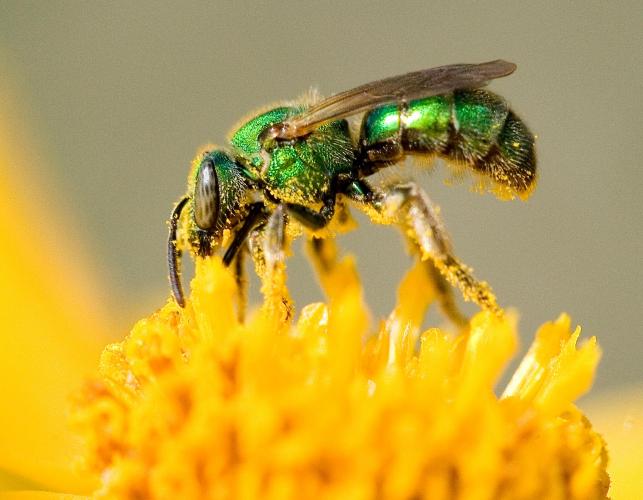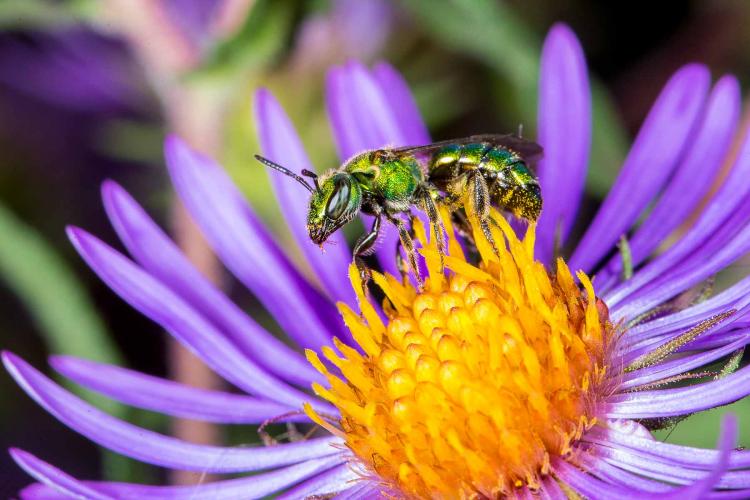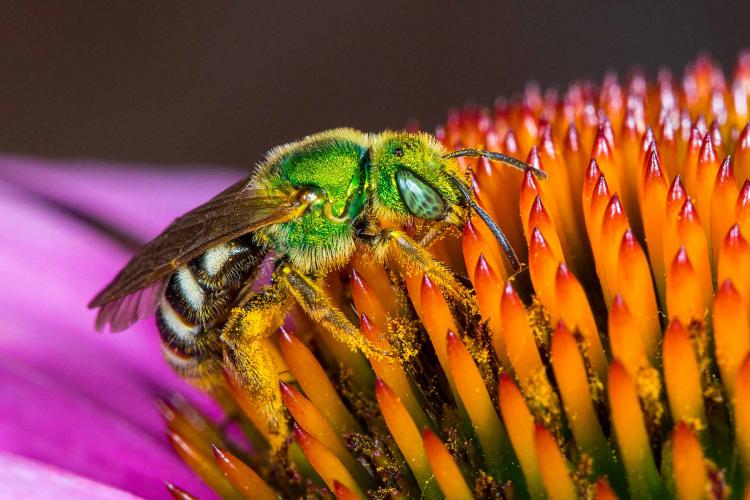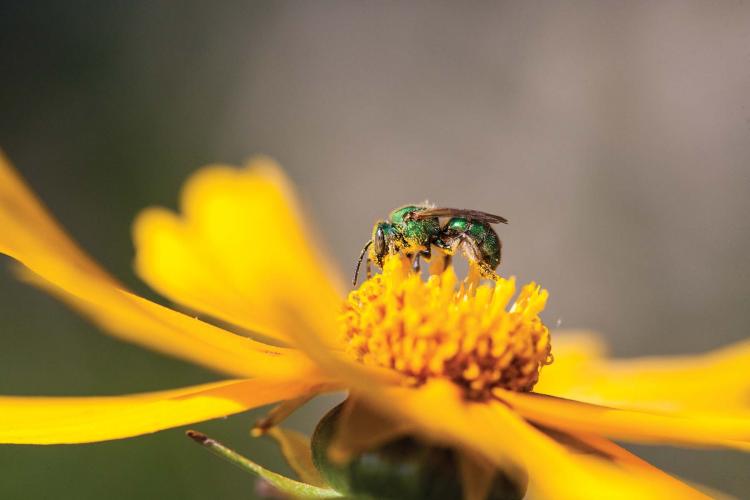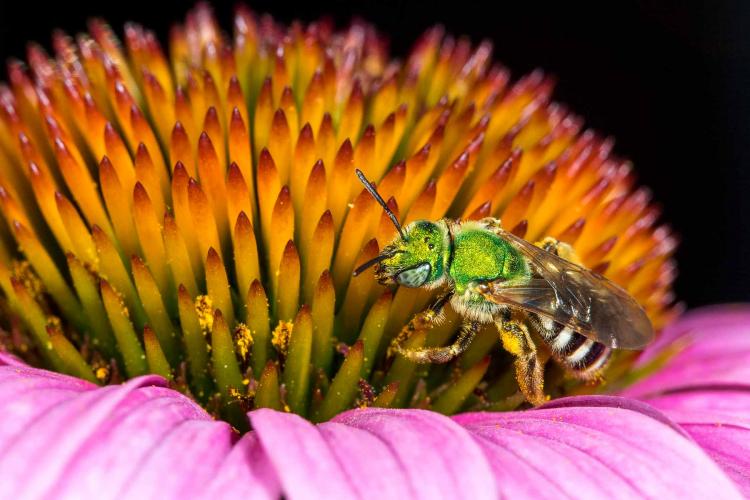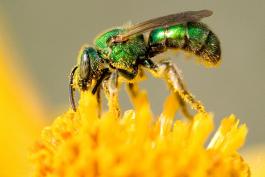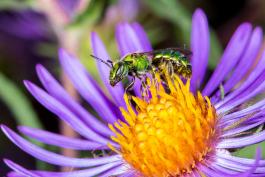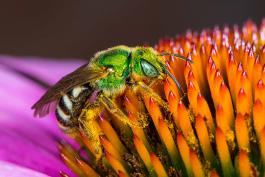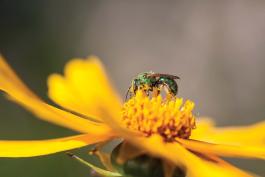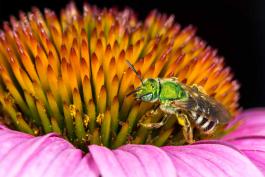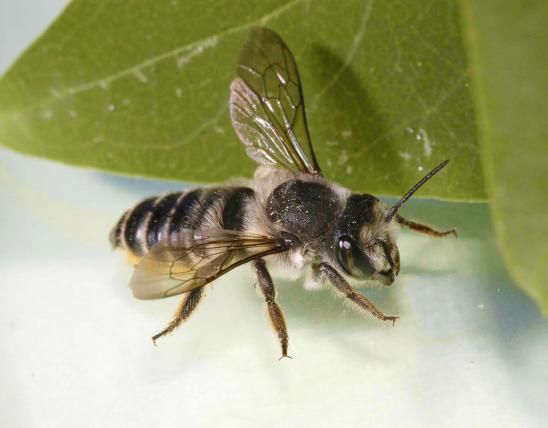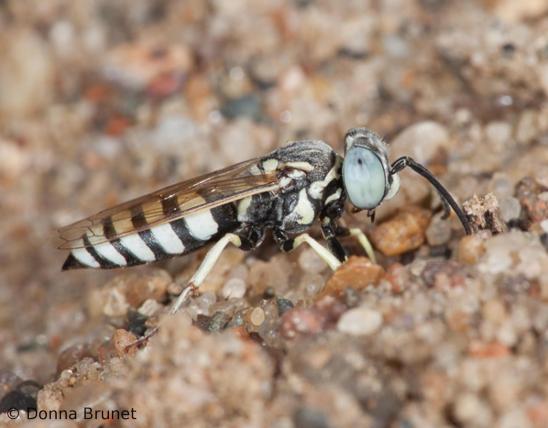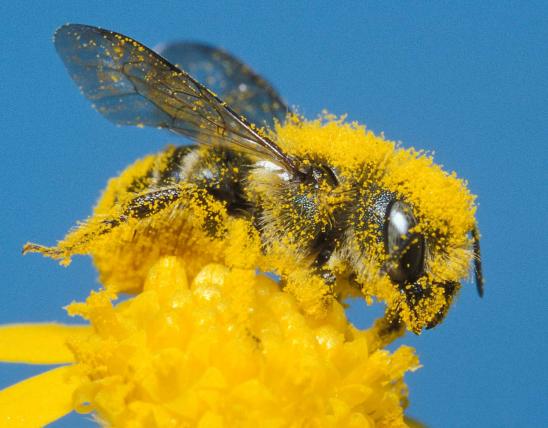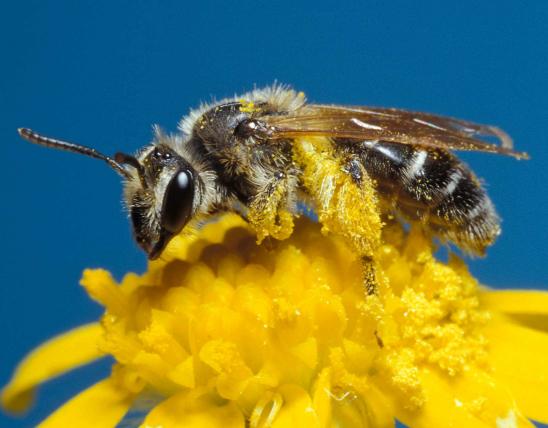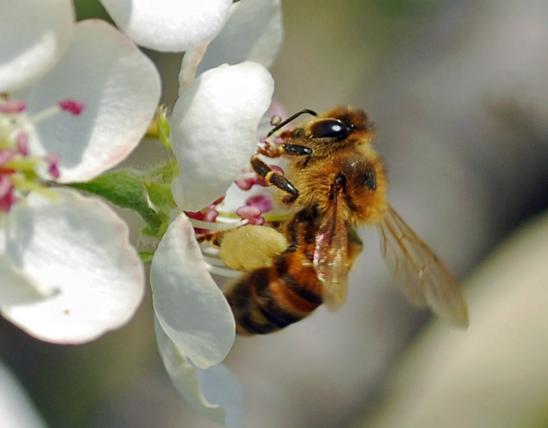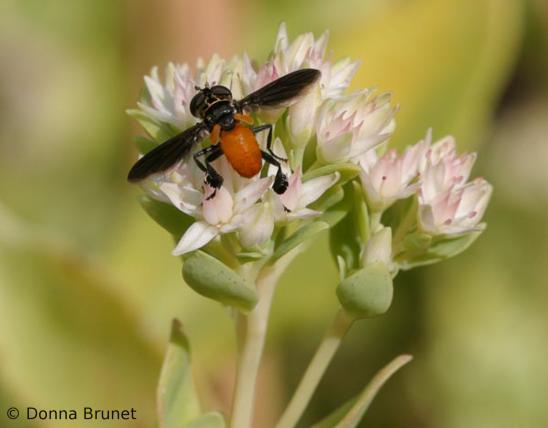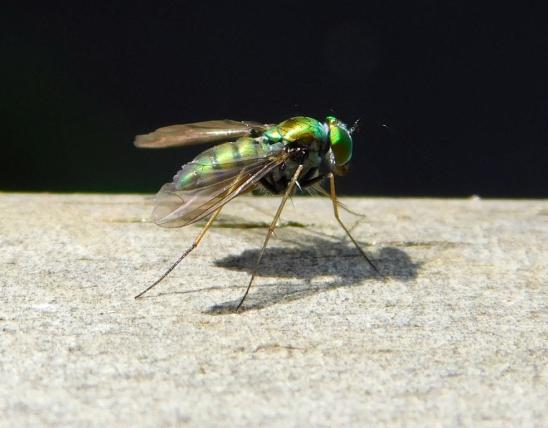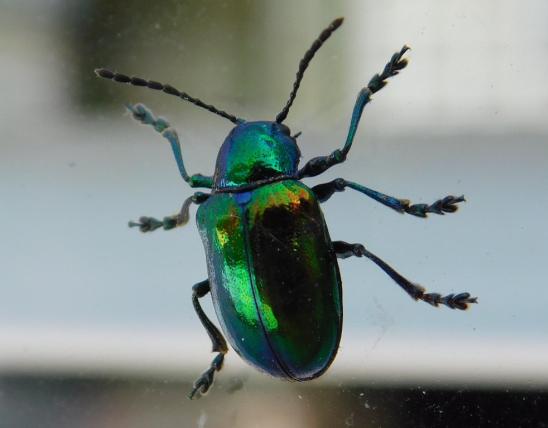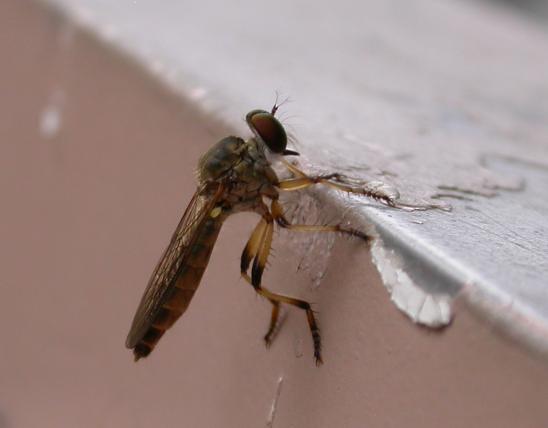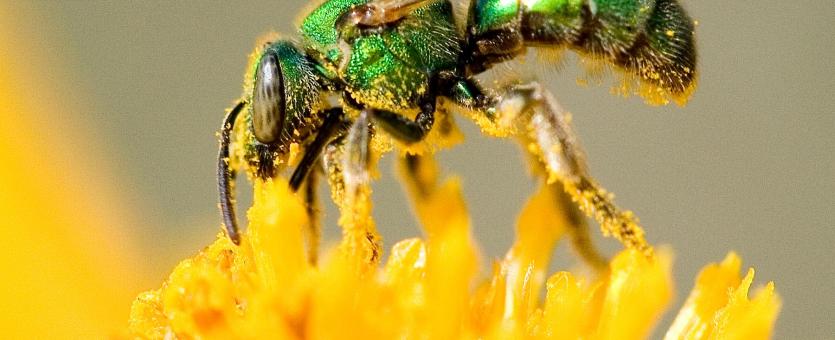
There are many species of sweat bees, or halictids, in several genera in Missouri. All are small; none are aggressive. Most members of this family are black or brown, but some are brightly colored, notably with metallic greens and blues. Their markings vary from green to red to yellow, often with bands similar to those of honeybees. All have short tongues, compared to other types of bees.
Specialists note details of wing venation, antennae structure, and other characteristics to distinguish this group from other bees, and to distinguish the various sweat bees from each other.
One of the most noticeable traits of sweat bees is their attraction to perspiration, which offers them precious moisture and salts.
Similar species: Cuckoo wasps (in family Chrysididae) are also small bee- or wasp-type insects in metallic blues and greens, but their bodies are usually covered with small pits, giving them a sculptured or pebbly look. Also, they can roll up into a ball for defense. Female cuckoo wasps cannot sting, which might explain the protective defensive posture in that group.
Several other types of bees and wasps are metallic-bodied, too.
Length: ¼–¾ inch. Many sweat bees are quite small.

Statewide.
Habitat and Conservation
The many species in this group occupy a great variety of habitats. Nearly all sweat bees nest in the ground; a few nest in rotten wood. Adults are usually seen as they forage for pollen and nectar among flowers in fields, gardens, grasslands, roadsides, and other open places where flowers are abundant.
The bright green bees in genus Augochlorella are the smallest and most abundant sweat bees, and many in that group have developed social behavior. However, their soil nests rarely have more than a few occupants.
Food
Larvae, developing within the nests, eat from a mass of pollen and nectar that their mothers provided to them when their eggs were laid.
Adults, like many other bees, eat nectar and pollen, pollinating flowers in the process. Like deer visiting a salt lick, or an athlete drinking an electrolyte beverage, they supplement their diet with salts, which they sometimes try to obtain from sweating humans.
Status
Halictids are one of the main families of native bees that occur in Missouri. They are solitary insects, without a hive of sisters to defend, so they are not aggressive. They are important pollinators.
Like most other native pollinators, many of these bee species are declining, which is deeply concerning because of their essential role in nature and in agriculture. Learn what you can do to help native bee populations recover.
Life Cycle
Some are solitary, but a number show different levels of social behavior. Sweat bees that begin a nest in April are frequently joined by other overwintered females that have not started nests. In these joint nests some individuals may function as workers and not lay eggs. By summer only one egg-laying bee remains. Some of her female offspring are workers, while others mate and survive the winter to start nests the following spring.
Human Connections
Sweat bees are famous — or infamous — for their tendency to land on humans to obtain moisture and salts from perspiration. It's kind of amusing to think that we are sports beverages for insects.
A gentle scrape will usually persuade a visiting sweat bee to move on, but pressing on a female sweat bee may prompt her to respond with a mild sting.
The plight of wild bees should concern us all. Fortunately, homeowners can easily help bee populations in their yards. Plant flowers that will bloom throughout the season, especially early and late in the season, when fewer pollen and nectar sources are available. Avoid pesticides and any plants or seed treated with neonicotinoids, which are harmful to all insects, including bees (some neonicotinoid names to watch for on plant or seed labels are imidacloprid and acetamiprid). Reduce mowing to allow broadleaf plants in your lawn to flower. Consider putting up a bee house.
About 30 percent of U.S. crops rely on native bees for pollination, so it's important to know that we need many more pollinators than just honeybees. Halictids and other native bees are often specialists that evolved alongside specific types of plants and are the only insects capable of pollinating them.
Halictid bees pollinate wildflowers, fruits and vegetables, and a variety of other crops.
The family name is derived from the genus name Halictus, which means "to gather" or "to assemble." Apparently this is in reference to the mother sweat bee's gathering of nectar and pollen to feed her young.
Ecosystem Connections
Halictids are some of the smallest bees that can buzz-pollinate. In this process, the bee grabs the anther of the flower in its mandibles, curls its abdomen around the anther, and vibrates its wing muscles, causing the anther to release its pollen. Many flowering plants require buzz pollination to release pollen for reproduction. Honeybees are not capable of buzz pollination, so these plants are dependent on native bees to perform this important duty.
An intriguing behavior that evolved in many insects, including several species of sweat bees, is cleptoparasitism ("clepto-" means stealing). Some types of sweat bees sneak into the nests of other species, eat the egg of the rightful owner, and lay their own egg on the food provided. Cleptoparasites thus depend on their hosts for life.
Native bees play a critical role in the health and integrity of our natural habitats. Amid Missouri's array of woodlands, grasslands, and wetlands is a wide variety of wildflowers and other flowering plants. Most of these are pollinated by various types of bees. Without pollination, they cannot produce seeds; they would not reproduce. The seeds, fruits, and the plants themselves are the food of countless animals. In a very real way, pollination is critical to life as we know it.
